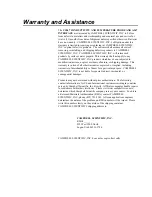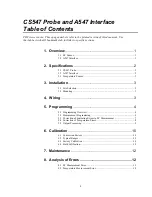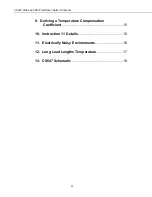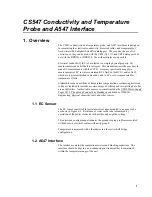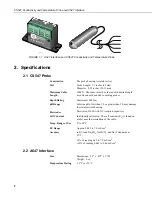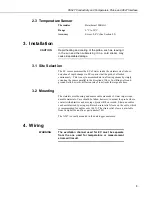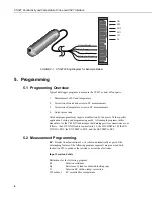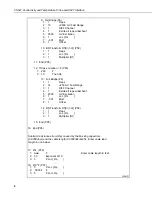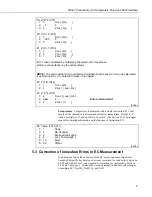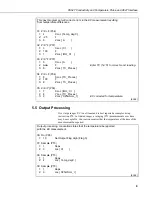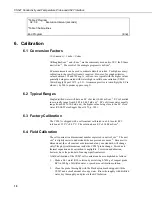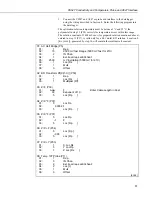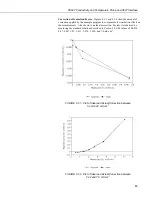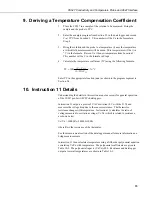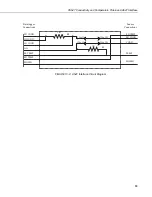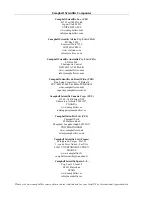
CS547 Conductivity and Temperature Probe and A547 Interface
7
19: Z=X*F (P37)
1:
5
X Loc [ Rp ]
2:
-.1
F
3:
5
Z Loc [ Rp ]
20: Z=X+F (P34)
1:
5
X Loc [ Rp ]
2:
-.005
F
3:
5
Z Loc [ Rp ]
21: Z=X+Y (P33)
1:
1
X Loc [ Rs ]
2:
5
Y Loc [ Rp ]
3:
1
Z Loc [ Rs ]
;
;EC is then calculated by multiplying the reciprocal of resistance,
;which is conductance, by the cell constant.
;
NOTE:
The cell constant (Kc) is printed on the label of each sensor or it can be calculated
(see Section 6.4). It is entered in place of nnn below.
22: Z=1/X (P42)
1:
1
X Loc [ Rs ]
2:
2
Z Loc [ l_over_Rs ]
23: Z=X*F (P37)
1:
2
X Loc [ l_over_Rs ]
2:
nnn
F
Enter cell constant.
3:
3
Z Loc [ Ct ]
(cont.)
Temperature
: Temperature is measured with a single instruction, P11, that
measures the thermistor resistance and calculates temperature. Output is °C
when a multiplier of 1 and an offset of 0 is used. See Section 10 of datalogger
manual for detailed information on the function of Instruction P11.
24: Temp (107) (P11)
1:
1
Reps
2:
3
SE Channel
3:
2
Excite all reps w/E2
4:
4
Loc [ Temp_degC ]
5:
1.0
Mult
6:
0.0
Offset
(cont.)
5.3 Correction of Ionization Errors in EC Measurement
Ionization caused by the excitation of the EC sensor can cause large errors.
Campbell Scientific has developed a linear correction for conductivity between
0.005 and 0.44 mS cm
-1
, and a quadratic correction for conductivity between
0.44 and 7.0 mS cm
-1
. Corrections were determined in standard salt solutions
containing KCl, Na
2
SO
4
, NaHCO
3
, and NaCl.


